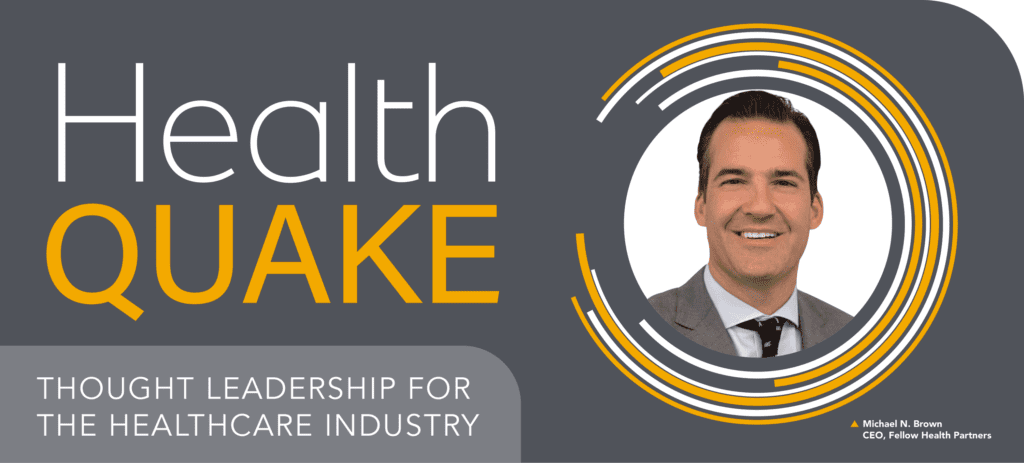
Summary:
More than ever, patients are paying a larger part of their medical costs out-of-pocket. It has turned them into “consumers” who have higher expectations of service while being more focused on value, including what they get for their money.
This means that medical professionals and staff need to focus more on what’s important as “service” and how to provide it. By doing this properly, you can improve your reviews, increase patient satisfaction, increase referrals, improve collections, and help ensure that your patients keep returning.
The relationship between patients and their medical providers is being redefined by changes in the cost of care, the increased financial responsibility generated by high deductible insurance plans, and pressure on physicians to practice more “efficient” medicine. It’s all part of the Healthquake™ that is rumbling through healthcare.
Patients are paying more out-of-pocket than ever before. They are spending their own money rather than the insurance company’s money and they are feeling it. Medical debt is increasing fast which is changing patient’s expectations of the medical experience. They are now “consumers”, a very different mindset that requires a different kind of focus by medical providers.
What can healthcare professionals do about this changing behavior so that both they and their patients are more satisfied?
We have identified 4 issues that are important to these “healthcare consumers”. In this issue of Healthquake™ we look at two issues focused on the patient’s experience and ways to improve their experience with medical providers and their staff. An enhanced experience could lead to better reviews, higher satisfaction scores, more referrals, and even better collections and payment. To read about the first two issues – Billing Confusion and Cost & Payment Frustration, click here.
The “experiential” issues are:
- Sub-Optimal Clinical Experience. As “consumers” they have core expectations of their medical provider that aren’t always being met.
- Sub-Optimal Office Experience. As “consumers” they have core expectations of the medical provider’s office and staff that aren’t always being met.
Sub-Optimal Clinical Experience
As a consumer, patients want to feel valued, listened to, heard, and respected. Unfortunately, they don’t always feel any of these. The pressure on doctors is to shorten the time they spend with the patient to focus on capturing everything in their EHR (Electronic Health Records) at the expense of “welcoming” body language such as eye contact. Doctors don’t like this, and patients don’t either.
When patients don’t feel that they are “getting their money’s worth”, they are less likely to give positive reviews, less likely to refer to others, and less likely to pay their bill promptly, if at all.
Even though Google has its fair share of negativity about some medical encounters, it’s easy to turn this around. It just requires focus and commitment, starting with treating the patient as a valued customer. By looking at the things patient’s like about their interactions with doctors and simply doing them, physicians can improve satisfaction scores.
According to an analysis of over 6 million patient reviews on Healthgrades, about 50% of positive patient comments about their doctor included non-technical behaviors such as compassion, comfort, patience, provider personality, and bedside manner. Keeping these positives in mind and demonstrating these behaviors with all patients can pay big dividends. Surprisingly, these non-technical behaviors were mentioned almost twice as much as clinical behavior.
On the clinical and technical side, almost 25% of patients mentioned these as positives: the value of knowledge, time spent during care encounter, “thoroughness” and patient-provider communication.
When it comes to the way physicians spend time during the patient encounter, the patient literally doesn’t have much of a say. In a surprising study from the Journal of Internal Medicine, research showed that when patients tried to explain why they were in the office, doctors interrupted the patients within 11 seconds (median time). Does this make them feel listened to?
Here’s how doctors might mitigate these factors. For starters, you might want to study the patient’s chart before they come in so you can start the encounter with real eye contact and focus before reaching for the EHR. Research shows that something as small as a personal apology because there has been a delay in keeping to the scheduled appointment time can go a long way to demonstrate respect. Every little bit helps.
Sub-Optimal Office Experience
If a patient doesn’t feel engaged with the practice staff, the results are the same as when they don’t feel engaged with the medical care provider – they are less likely to give positive reviews, less likely to refer to others, and even less likely to pay their bill.
These days, it can be challenging to work at the front desk or in other parts of a physician’s practice because of staff shortages, changing policies, lack of supportive management, and even pay scales.
These factors contribute to patient complaints about disorganized offices, long wait times on hold, failure to return calls, and even the way they are greeted when they arrive for an appointment.
According to the Healthgrades analysis, patients are looking for kindness, help, professional behavior, empathy, and compassion when they are in the office.
Although it might add a bit to the work day, staff can make sure the reception areas are tidy and well-lit, they can smile and greet patients by name when possible, and they can try to manage their own stress and frustration to make the patient feel valued. Something as simple as a smile and eye contact can help a lot.
A little thing, like a staff member making special parking arrangements for a patient, can contribute to positive perceptions about the reliability and scheduling of care delivery at the practice.
In the final analysis, if physicians and staff treat patients the way they would like to be treated, everyone will benefit from the patients’ enhanced positive opinions.